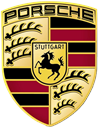
Porsche Boxster Roadster engines, drive and performance
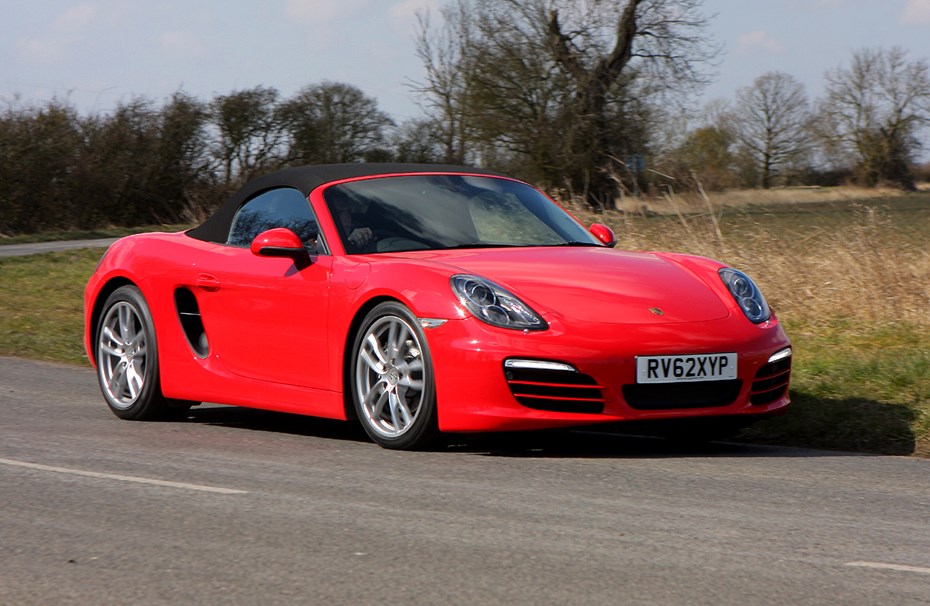
There are two derivatives: the standard Boxster and the Boxster S. Each can be ordered with a six-speed manual gearbox, or the PDK seven-speed semi-automatic transmission that has paddleshifts behind the steering wheel. Both Boxsters have the Sport Plus button as standard and that allows the driver to choose between a sporty setting, or a comfort mode that is also better for fuel economy.
In Sport mode you get a quicker throttle response and with the PDK transmission upshifts take place later and downshifts come earlier. The standard Boxster has a 261bhp 2.7-litre six-cylinder petrol engine under the bonnet. It’s 0.2 litres smaller than the predecessor but power is up by 13bhp. With more power and less weight, performance has been improved.
The 0-62mph sprint takes 5.8 seconds with the six-speed manual, but in Sport Plus mode that falls to 5.7 seconds. With the PDK semi-automatic transmission the benchmark sprint is achieved in 5.5 seconds. Top speed is 164mph. Those are the stats, but what’s it like in practice? Well, power delivery on the standard Boxster is smooth, linear and uncompromising when you are in Sport mode and that’s where you need to leave it if you want to push the car a little bit.
Normal mode is fine around town, but get it on a B-road and you’ll find yourself missing that extra oomph from the Sport setting. The standard Boxster is fast but it’s not brutal. Press the accelerator pedal and it’ll respond dutifully. There’s no unhealthy slug of power low down in the rev range, just a straightforward, unflustered burst of rapid acceleration.
That’s because the maximum power output is reached at a heady 6,700rpm. The Boxster S, meanwhile, has the same 3.4-litre engine as before but power has been increased by 9bhp to give a total output of 311bhp, also achieved at 6,700rpm. It will get from 0-62mph in 5.1 seconds using the six-speed manual, 5.0 seconds flat with the help of Sport Plus and just 4.8 seconds with the PDK gearbox.
Top speed is 173mph. The S is more urgent and it feels a handful when you are accelerating quickly. It’s not unwieldy though, and if outright performance is your priority you’ll not baulk at the extra cost needed to secure the S. Our pick would be the standard Boxster because it’s fast enough, and we think it is best with the PDK transmission. With this system you get smooth and quick gearchanges using the paddleshifts.
Because the clutch pedal is quite firm in manual Boxsters, the PDK option is a must-have option if you live in an urban area.
It’s pretty near perfect on the road. Blast into a corner and the nose will respond accordingly, and you get extra confidence because there’s shedloads of grip. The wider track means the Boxster is even more composed on twisty B-Roads and it’ll change direction quickly, with an almost dart-like feel. It’s extremely responsive, and although Porsche has introduced electromechanical steering, the sensations and feedback coming through the wheel are still strong.
This gives you the feeling that you are at one with the car. It’s not quite as good as the previous car’s steering but it is very close and only the very keen drivers would be able to tell the difference. Brakes on both models are fantastic – even on slippery surfaces – allowing you to get to a standstill from speed without any fuss. You can shell out extra for the optional Sport Chrono package that helps you corner more quickly.
You can also opt for Porsche’s Torque Vectoring system to increase the handling capabilities but we think that’s an unnecessary expense.


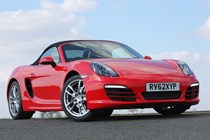
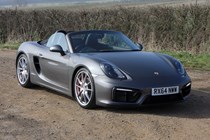
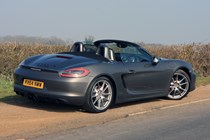
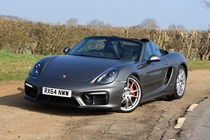
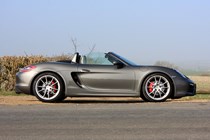
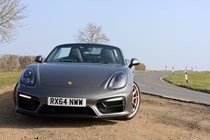
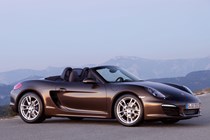
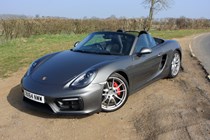
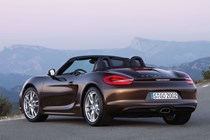
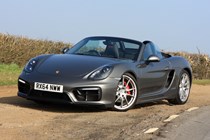
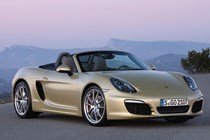
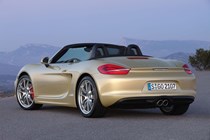
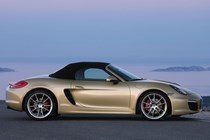
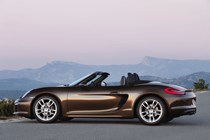
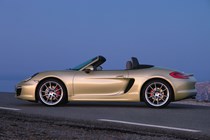
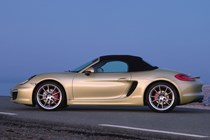
.jpg)
.jpg)
.jpg)
.jpg)
.jpg)
.jpg)
.jpg)
.jpg)

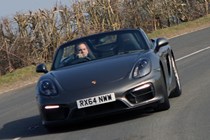
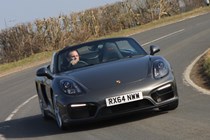
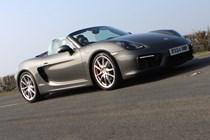
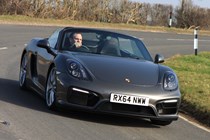
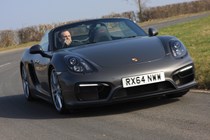
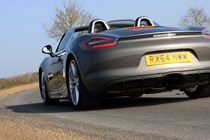
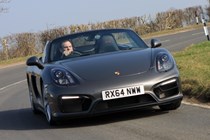
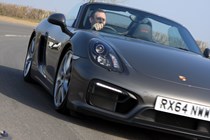
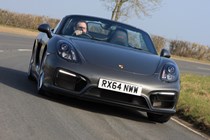
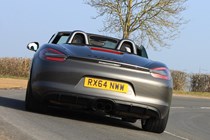
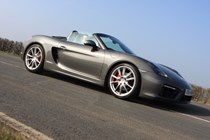

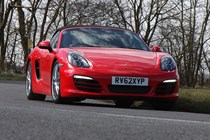
.jpg)
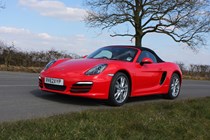
.jpg)
.jpg)
.jpg)
.jpg)
.jpg)

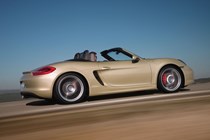
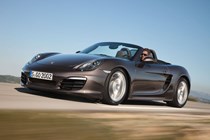
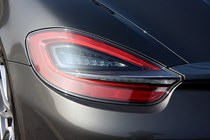
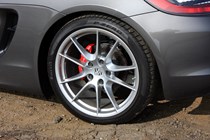
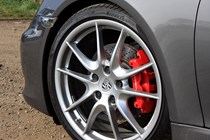
.jpg)
.jpg)
.jpg)
.jpg)
.jpg)
.jpg)
.jpg)
.jpg)
.jpg)
.jpg)
.jpg)
.jpg)
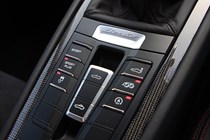
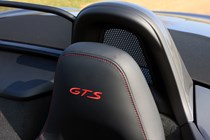
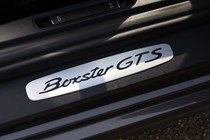
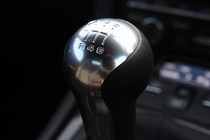
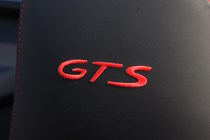

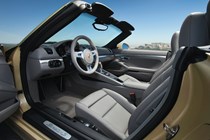
.jpg)
.jpg)
.jpg)
.jpg)
.jpg)
.jpg)
.jpg)
.jpg)
.jpg)
.jpg)
.jpg)
.jpg)
.jpg)
.jpg)
.jpg)
.jpg)
.jpg)
.jpg)
.jpg)
.jpg)
.jpg)
















.jpg?quality=50)
.jpg?quality=50)
.jpg?quality=50)
.jpg?quality=50)
.jpg?quality=50)
.jpg?quality=50)
.jpg?quality=50)
.jpg?quality=50)














.jpg?quality=50)

.jpg?quality=50)
.jpg?quality=50)
.jpg?quality=50)
.jpg?quality=50)
.jpg?quality=50)






.jpg?quality=50)
.jpg?quality=50)
.jpg?quality=50)
.jpg?quality=50)
.jpg?quality=50)
.jpg?quality=50)
.jpg?quality=50)
.jpg?quality=50)
.jpg?quality=50)
.jpg?quality=50)
.jpg?quality=50)
.jpg?quality=50)







.jpg?quality=50)
.jpg?quality=50)
.jpg?quality=50)
.jpg?quality=50)
.jpg?quality=50)
.jpg?quality=50)
.jpg?quality=50)
.jpg?quality=50)
.jpg?quality=50)
.jpg?quality=50)
.jpg?quality=50)
.jpg?quality=50)
.jpg?quality=50)
.jpg?quality=50)
.jpg?quality=50)
.jpg?quality=50)
.jpg?quality=50)
.jpg?quality=50)
.jpg?quality=50)
.jpg?quality=50)
.jpg?quality=50)